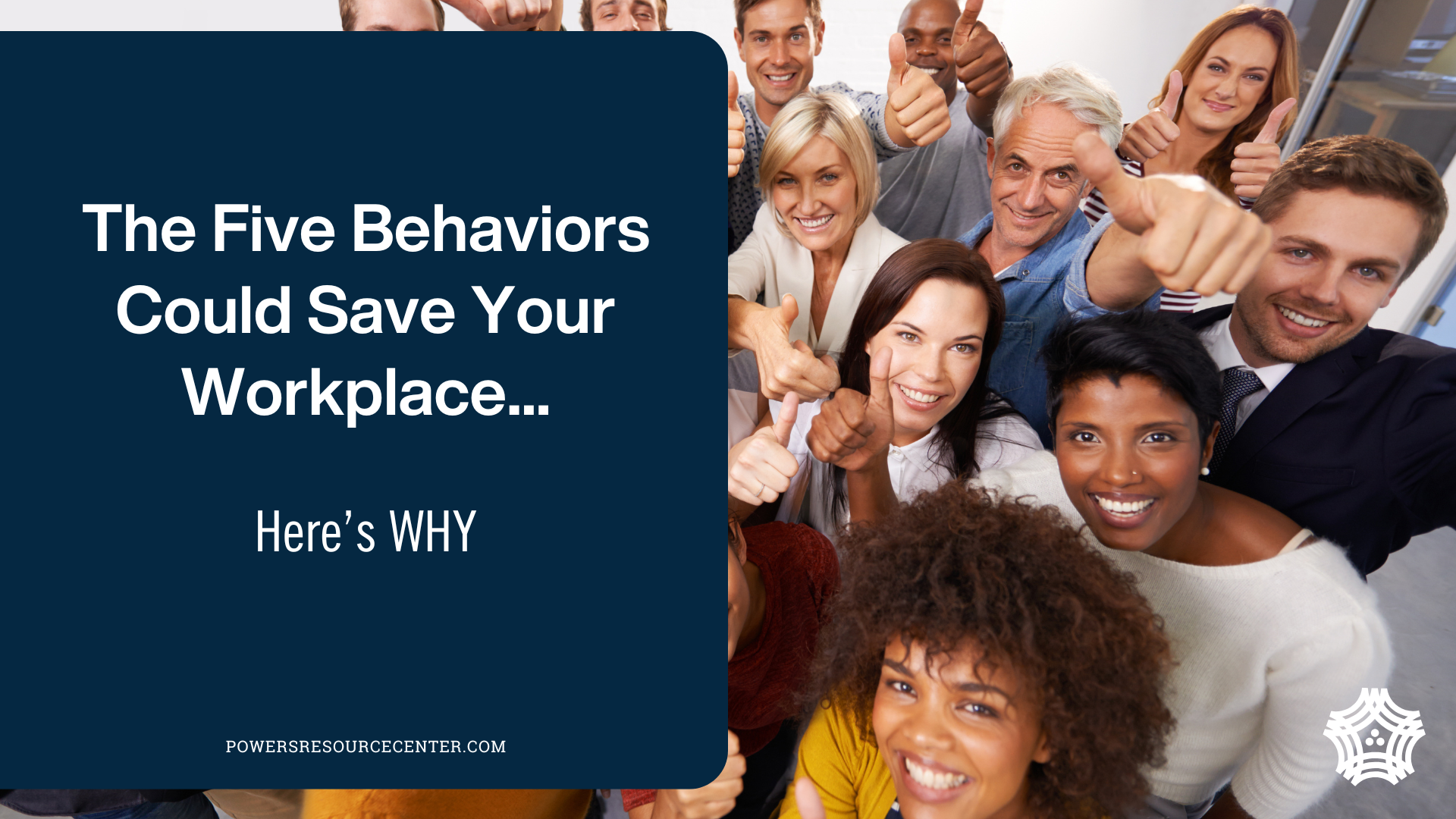The Five Behaviors Could Save Your Workplace—Here’s Why
Let me be real with you.
I’ve spent over two decades working with teams—from brand-new startups to Fortune 500 giants—and I’ve seen it all. High-performing unicorns. Dysfunctional silos. Teams that can’t sit in the same room without holding their breath.
But I’ve also seen something else.
I’ve seen what happens when teams actually decide to work on being a team. Not just on paper. Not just in offsite icebreakers. I mean real, meaningful work that shifts culture, performance, and relationships for good.
That’s what the Five Behaviors of a Cohesive Team® framework delivers—and I believe with my whole heart that this model can save your workplace.
I’ll explain WHY…
We talk a lot about “team building” in corporate circles, but most of what we call team building is superficial. A ropes course or happy hour might boost morale temporarily, but they won’t fix what’s broken.
What actually heals a team is doing the hard stuff—learning to trust, disagree productively, make tough decisions together, hold each other accountable, and commit to results that matter.
The Five Behaviors model—developed by Patrick Lencioni and backed by research from Wiley Workplace Learning—gives teams a clear, powerful, and proven framework to do just that.
And when it’s done right? It doesn’t just fix problems. It transforms culture. I’ve seen it firsthand with corporate insurance giants, global energy companies, and large municipal governments. It doesn’t matter what industry you’re in…as long as you have people working side by side (regardless of in-person, remote, or hybrid work settings) who need to align with a common company goal, the chances of conflict and the need for support rise dramatically.
The Five Behaviors build on each other like layers of a foundation.
Trust – Vulnerability-based trust is the foundation. Without it, there’s no real communication or safety.
Conflict – With trust in place, teams can engage in healthy, productive conflict. They stop avoiding hard conversations.
Commitment – With conflict explored, real commitment (not fake consensus) becomes possible.
Accountability – Teams that commit can hold each other accountable without fear.
Results – And finally, all of these points toward shared, measurable, meaningful results.
When one of these behaviors is weak, the others suffer. But when you strengthen the base, everything changes.
According to research from Wiley and Lencioni’s The Table Group, teams that apply the Five Behaviors model experience:
35% increase in team performance
45% increase in team trust
36% improvement in accountability
34% boost in commitment to goals
And in a 2022 Wiley Workplace Intelligence Report, 97% of employees said that team dysfunction negatively impacted their well-being and job satisfaction. That means team health is not optional. It directly affects retention, performance, and culture.
Let me share a couple stories that still give me chills.
Story 1: A Leadership Team in Crisis
A VP at a financial services company called me last year. Her executive team had hit a wall—internal conflict, passive-aggressive emails, late projects, low morale. Turnover was rising, and people were whispering about whether the team could recover.
We led them through a Five Behaviors training and certification with follow-up coaching sessions over 6 months.
They built trust in ways they hadn’t imagined. They stopped being polite and started being real. They began surfacing issues early instead of letting them fester. And by Q3? They surpassed their revenue goals for the first time in two years.
In her words:
“We’re not the same team. We’ve rebuilt something better—stronger, and honestly, more human.”
Story 2: From Silos to Synergy
Another team—a biotech firm—was suffering from what I call “silo syndrome.”
Brilliant people. Zero collaboration. Their lack of trust made cross-functional work impossible.
After implementing the Five Behaviors across all departments, they saw increased collaboration, faster decision-making, and better innovation flow.
The CTO said:
“It used to take three weeks to agree on anything. Now it takes three days—and the ideas are stronger.”
Story 3: From Quiet Tension to Teamwide Transformation
A real estate investment company came to us during a period of quiet dysfunction—performance looked fine on the surface, but morale and collaboration were eroding underneath. We guided their executive team through a Five Behaviors program, starting with trust-building and communication work before a pivotal offsite session.
That experience became a major turning point. Over the next 6–7 months, the team saw a noticeable shift in morale, collaboration, and cohesion. In the words of their Chief Accounting Officer:
“I can’t overstate how much our team’s morale and collaboration have improved. It was a real turning point.”
This is what’s possible when teams stop working around each other—and start working with each other.
In a hybrid world, cohesion isn’t a luxury—it’s a lifeline.
When teams aren’t physically together, clarity, communication, and connection matter even more. The Five Behaviors gives remote and hybrid teams a common language, a shared foundation, and a way to work through complexity together—even across time zones.
Let me say this clearly:
Team cohesion drives revenue.
Team cohesion protects your culture.
Team cohesion is how you weather a soft market.
If your team is stuck in conflict, spiraling on decisions, or afraid to speak up, it’s not a personality issue—it’s a structure issue.
The Five Behaviors model gives your team structure, tools, and a path forward.
At Powers Resource Center, we specialize in helping executive and leadership teams not only understand the Five Behaviors—but live them. We’re proud to be a Wiley Diamond Award-winning partner, and I personally lead many of these programs for executive-level teams.
Right now, enrollment is open for all eager-and-ready struggling corporate teams to go through this program—with live facilitation, diagnostics, and personalized support. We do this in an intimate, high-impact way that meets your team where you are.
If you’re ready to stop spinning and start building, let’s talk.
I know what’s at stake when teams aren’t working. I’ve lived it, coached through it, and watched teams fall apart—or rise—based on the quality of their connection.
The Five Behaviors isn’t a magic fix. But it’s the most powerful framework I’ve ever used to help teams go from dysfunction to alignment, from silence to honesty, and from survival to results.
If you’re ready to do that work, I’d be honored to guide you through it.
Tara Powers
CEO, Powers Resource Center
LinkedIn:@tarapowers
Website:powersresourcecenter.com










